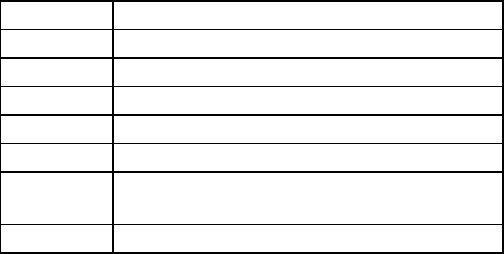
2001/10/02
CHAPTER 5 PJL - 6
1.3. PJL Syntax and Format
Syntax
<For Example>
@PJL ENTER LANGUAGE = emulation [<CR>]<LF>
@PJL PJL Prefix
ENTER Command name
LANGUAGE Option name
@PJL ENTER LANGUAGE Enter this portion verbatim
[ ] The words in brackets [ ... ] indicates optional parameters. You should not
type the brackets themselves in the command.
< .. > The words in < .. > indicates a control code character
<LF> Required line feed
< HT > Horizontal tab character (ASCII 9)
< LF > Line feed character ( ASCII 10 )
< CR > Carriage Return ( ASCII 13 )
< SP > Space ( ASCII 32 )
< ESC > Escape ( ASCII 27 )
< FF > Form Feed ( ASCII 12 )
< WS > White space which consists of some < SP >
and < HT >
< words > Printable characters
Format
PJL commands have 4 types of formats as shown below.
Format 1 <ESC>%-12345X
This format is only used for the Universal Exit Language(UEL) command.
Format 2 @PJL[<CR>]<LF>
This format allows a PJL line without a command, and is used to break several PJL command lines visually, to
make it easier to see the PJL command lines.
Format 3 @PJL command [<words>] [<CR>] <LF>
This format is used only for the COMMENT and ECHO commands.
Format 4 @PJL command [command modifier : value]
option=value[<CR>]<LF>
This format is used for all other PJL commands.
PJL Syntax Rules:
PJL Syntax should be written according to the following rules.
• "@PJL" must be uppercase. The other words of a PJL command are not case-sensitive.
• Spacing between characters consists of one or more of either the space character (ASCII 32) or the
horizontal tab character(ASCII 9).
• White space should be placed as follows, depending on the location within the command.
w White space must be placed between @PJL and the PJL command name and between the PJL command
and command modifiers.
w If a white space is placed in any other place in a command, it is optional.
w If a white space is not placed between two portions of a command, the command is not valid.


















